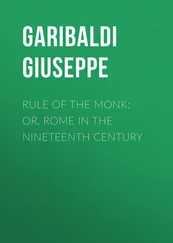Jules Verne - Celebrated Travels and Travellers, Part 3. The Great Explorers of the Nineteenth Century
Здесь есть возможность читать онлайн «Jules Verne - Celebrated Travels and Travellers, Part 3. The Great Explorers of the Nineteenth Century» — ознакомительный отрывок электронной книги совершенно бесплатно, а после прочтения отрывка купить полную версию. В некоторых случаях можно слушать аудио, скачать через торрент в формате fb2 и присутствует краткое содержание. Жанр: foreign_language, foreign_prose, на английском языке. Описание произведения, (предисловие) а так же отзывы посетителей доступны на портале библиотеки ЛибКат.
- Название:Celebrated Travels and Travellers, Part 3. The Great Explorers of the Nineteenth Century
- Автор:
- Жанр:
- Год:неизвестен
- ISBN:нет данных
- Рейтинг книги:5 / 5. Голосов: 1
-
Избранное:Добавить в избранное
- Отзывы:
-
Ваша оценка:
- 100
- 1
- 2
- 3
- 4
- 5
Celebrated Travels and Travellers, Part 3. The Great Explorers of the Nineteenth Century: краткое содержание, описание и аннотация
Предлагаем к чтению аннотацию, описание, краткое содержание или предисловие (зависит от того, что написал сам автор книги «Celebrated Travels and Travellers, Part 3. The Great Explorers of the Nineteenth Century»). Если вы не нашли необходимую информацию о книге — напишите в комментариях, мы постараемся отыскать её.
Celebrated Travels and Travellers, Part 3. The Great Explorers of the Nineteenth Century — читать онлайн ознакомительный отрывок
Ниже представлен текст книги, разбитый по страницам. Система сохранения места последней прочитанной страницы, позволяет с удобством читать онлайн бесплатно книгу «Celebrated Travels and Travellers, Part 3. The Great Explorers of the Nineteenth Century», без необходимости каждый раз заново искать на чём Вы остановились. Поставьте закладку, и сможете в любой момент перейти на страницу, на которой закончили чтение.
Интервал:
Закладка:
Seetzen had scarcely arrived at the village of Gerasa and enjoyed a brief rest, before he was surrounded by half a score of mounted men, who said they had come by order of the vice-governor of Hauran to arrest him. Their master, Omar Aga, having learned that the traveller had been seen in the country the preceding year, and imagining his passports to be forgeries, had sent them to bring him before him.
Resistance was useless. Without allowing himself to be disconcerted by an incident which he regarded as a simple contretemps, Seetzen proceeded in the direction of Hauran, where after a day and a half's journey he met Omar Aga, travelling with the Mecca caravan. The travellers having received a hearty welcome, departed on the morrow, but meeting upon his way with many troops of Arabs, upon whom his demeanour imposed respect, he came to the conclusion that it had been Omar Aga's intention to have him robbed.
Returning to Damascus, Seetzen had great trouble in finding a guide who would accompany him in his expedition along the eastern shore of the Jordan, and around the Dead Sea. At last, a certain Yusuf-al-Milky, a member of the Greek church, who, for some thirty years, had carried on traffic with the Arab tribes, and travelled in the provinces which Seetzen desired to visit, agreed to bear him company.
The two travellers left Damascus on the 19th of January, 1806. Seetzen's entire baggage consisted of a few clothes, some indispensable books, paper for drying plants, and an assortment of drugs, necessary to sustain his assumed character as a physician. He wore the dress of a sheik of secondary rank.
The districts of Rasheiya and Hasbeiya, at the foot of Mount Hermon – whose summit at the time was hidden by snow – were the first explored by Seetzen, for the reason that they were the least known in Syria.
He then visited Achha, a village inhabited by the Druses, upon the opposite side of the mountain; Rasheiya, the residence of the Emir; and Hasbeiya, where he paid a visit to the Greek Bishop of Szur or Szeida, to whom he carried letters of recommendation. The object which chiefly attracted his attention in this mountainous district, was an asphalt-mine, whose produce is there used to protect the vines from insects.
Leaving Hasbeiya, Seetzen proceeded to Bâniâs, the ancient Casaræa Philippi, which is now a mere collection of huts. Even if traces of its fortifications were discoverable, not the smallest remains could be found of the splendid temple erected by Herod in honour of Augustus.
Ancient authorities hold that the river of Bâniâs is the source of the Jordan, but in reality that title belongs to the river Hasbany, which forms the larger branch of the Jordan. Seetzen recognized it, as he also did the Lake of Merom, or the ancient Samachonitis.
Here he was deserted by his muleteers, whom nothing could induce to accompany him so far as the bridge of Jisr-Benat-Yakûb, and also by his guide Yusuf, whom he was forced to send by the open road to await his arrival at Tiberias, while he himself proceeded on foot towards the celebrated bridge, accompanied by a single Arab attendant.
He, however, found no one at Jisr-Benat-Yakûb who was willing to accompany him along the eastern shore of the Jordan, until a native, believing him to be a doctor, begged him to go and see his sheik, who was suffering from ophthalmia, and who lived upon the eastern bank of the Lake of Tiberias.
Seetzen gladly availed himself of this opportunity; and it was well he did so, for he was thus enabled to study the Lake of Tiberias and also the Wady Zemmâk at his leisure, not, however, without risk of being robbed and murdered by his guide. Finally he reached Tiberias, called by the Arabs Tabaria, where he found Yusuf, who had been waiting for him for several days.
"The town of Tiberias," says Seetzen, "is situated upon the lake of the same name. Upon the land side it is surrounded by a good wall of cut basalt rock, but nevertheless, it scarcely deserves to be called a town. No trace of its earlier splendour remains, but the ruins of the more ancient city, which extended to the Thermæ, a league to the eastward, are recognizable.
"The famous Djezar-Pasha caused a bath to be erected above the principal spring. If these baths were in Europe, they would rival all those now existing. The valley in which the lake is situated, is so sheltered, and so warm, that dates, lemon-trees, oranges, and indigo, flourish there, whilst on the high ground surrounding it, the products of more temperate climates might be grown."
South-west of the lake are the remains of the ancient city of Tarichæa. There, between two mountain chains, lies the beautiful plain of El Ghor, poorly cultivated, and overrun by Arab hordes. No incident of moment marked Seetzen's journey to Decapolis, during which he was obliged to dress as a mendicant, to escape the rapacity of the native tribes.
"Over my shirt" he relates, "I wore an old kambas, or dressing-gown, and above that a woman's ragged chemise; my head was covered with rags, and my feet with old sandals. I was protected from cold and wet by an old ragged 'abbaje,' which I wore across my shoulders, and a stick cut from a tree served me as a staff; my guide, who was a Greek Christian, was dressed much in the same style; and together we scoured the country for some ten days, often hindered in our journey by chilling rains, which wetted us to the skin. For my part, I travelled an entire day in the mud with bare feet, because I could not wear my sandals upon sodden ground."
Draa which he reached a little farther on, presented but a mass of desert ruins; and no trace of the monuments which rendered it famous in earlier days, were visible. El-Botthin, the next district, contains hundreds of caverns, hewn in the rocks, which were occupied by the ancient inhabitants. It was much the same at Seetzen's visit. That Mkês was formerly a rich and important city, is proved by its many ruined tombs and monuments. Seetzen identified it with Gadara, one of the minor towns of the Decapolis. Some leagues beyond are the ruins of Abil or Abila. Seetzen's guide, Aoser, refused to go there, being afraid of the Arabs. The traveller was, therefore, obliged to go alone.
"This town," he says, "is entirely in ruins and abandoned. Not a single building remains; but its ancient splendour is sufficiently proved by ruins. Traces of the old fortifications remain, and also many pillars and arches of marble, basalt, and granite. Beyond the walls, I found a great number of pillars; two of them were of an extraordinary size. Hence I concluded that a large temple had formerly existed there."
On leaving El-Botthin, Seetzen entered the district of Edschlun, and speedily discovered the important ruins of Dscherrasch, which may be compared with those of Palmyra and Baalbek.
"It is difficult to conjecture," says Seetzen, "how this town, which was formerly so celebrated, has hitherto escaped the attention of antiquarians. It is situated in an open plain, which is fertile, and watered by a river. Several tombs, with fine bas-reliefs arrested my attention before I entered it; upon one of them, I remarked a Greek inscription. The walls, which were of cut marble, are entirely crumbled away, but their length over three quarters of a league, is still discernible. No private house has been preserved, but I remarked several public buildings of fine architectural design. I found two magnificent amphitheatres constructed of solid marble, the columns, niches, &c., in good condition, a few palaces, and three temples; one of the latter having a peristyle of twelve large Corinthian pillars, of which eleven were still erect. In one of these temples I found a fallen column of the finest polished Egyptian granite. Beside these, I found one of the city gates, formed of three arches, and ornamented with pilasters, in good preservation. The finest of the remains is a street adorned throughout its length with Corinthian columns on either side, and terminating in a semicircle, which was surrounded by sixty Ionic columns, all of the choicest marble. This street was crossed by another, and at the junction of the two, large pedestals of wrought stone occupied each angle, probably in former times these bore statues. Much of the pavement was constructed of hewn stone. Altogether I counted nearly two hundred columns, still in a fair state of preservation; but the number of these is far exceeded by those which have fallen into decay, for I saw only half the extent of the town, and in all probability the other half beyond this was also rich in remarkable relics."
Читать дальшеИнтервал:
Закладка:
Похожие книги на «Celebrated Travels and Travellers, Part 3. The Great Explorers of the Nineteenth Century»
Представляем Вашему вниманию похожие книги на «Celebrated Travels and Travellers, Part 3. The Great Explorers of the Nineteenth Century» списком для выбора. Мы отобрали схожую по названию и смыслу литературу в надежде предоставить читателям больше вариантов отыскать новые, интересные, ещё непрочитанные произведения.
Обсуждение, отзывы о книге «Celebrated Travels and Travellers, Part 3. The Great Explorers of the Nineteenth Century» и просто собственные мнения читателей. Оставьте ваши комментарии, напишите, что Вы думаете о произведении, его смысле или главных героях. Укажите что конкретно понравилось, а что нет, и почему Вы так считаете.












